Contents
Growing good pepper seedlings is like playing roulette. Even if the gardener creates the most ideal conditions for young plants, problems can still arise with them. After all, pepper is a very capricious culture that reacts painfully to even the most minor changes or errors in care. But he cannot show his dissatisfaction, therefore he shows the gardener in every possible way that he is unwell: his leaves turn yellow and curl, and then the stem also falls. Below we will talk about the reasons for this behavior of pepper seedlings, as well as first aid measures for young plants.

Why pepper seedlings turn yellow
Yellowing of the leaves is a normal reaction of any plant to some kind of problems or failures in its growth, and pepper seedlings are no exception to the rule. At the same time, it is important not to miss this signal for help and immediately begin saving measures. And for this you need to know why such a situation may arise at all.
But if yellowing has begun on the middle and upper sheets, then this is a reason to sound the alarm.
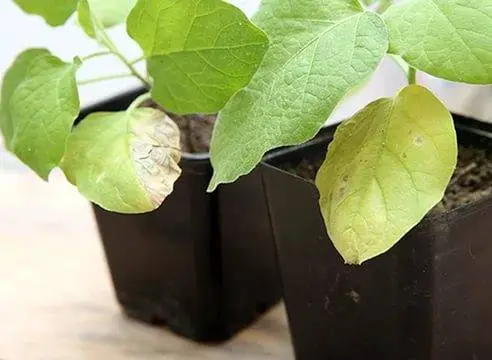
Below we will look at the most common causes of yellowing of pepper leaves, as well as ways to help diseased plants. It is important to understand that after the implementation of certain procedures, the yellowed leaves will not turn green. But other leaves, and the plant itself will feel much better.
Problems with the root system
In pepper plants, especially in young shoots, the root system is the weakest point. Most often, the cause of yellowing of the leaves is precisely problems with the roots of young plants. Moreover, the yellowing of the leaves causes not only the death or poor development of the roots of seedlings, but also their excessive growth. In this case, the roots are so strongly intertwined with each other that in the places of interlacing the process of supply of nutrients is disrupted and the roots begin to die. In addition, the root system of seedlings can be damaged by excessive loosening of the soil.
If the leaves of pepper seedlings have begun to turn yellow, the first thing to do is to check their root system. To do this, the plant must be pulled out of the pot or planting container as carefully as possible and inspect the roots. If there are few of them or they are dark in color, then the root system dies. To help the plant, you need to use root stimulants. If the roots are white, but strongly intertwined, then you should very carefully try to straighten them.
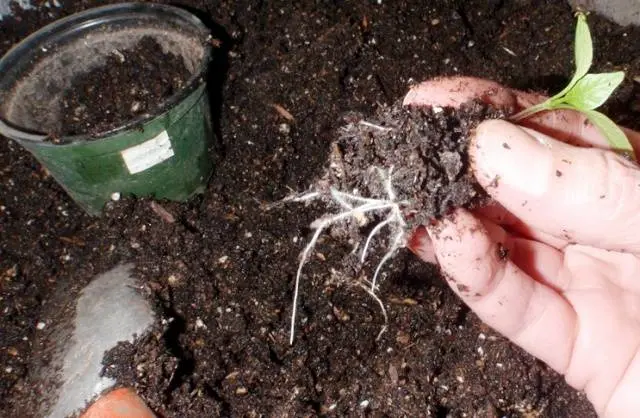
Lack of nitrogen
If the root system of the pepper is healthy, then the yellowing of the leaves may be caused by a lack of nitrogen. Of all the substances necessary for optimal growth of young plants, pepper is especially sensitive to nitrogen. The pepper absorbs this substance from the ground, therefore, when the nitrogen in it runs out, the plants begin to get sick.
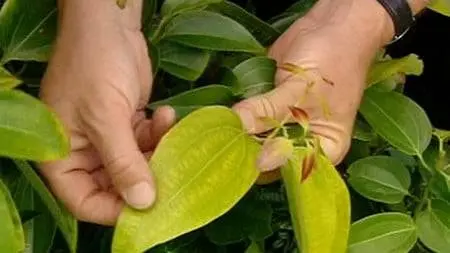
The simplest and most effective thing to do in case of yellowing leaves due to a lack of nitrogen is to apply nitrogen-containing fertilizers. Most often, urea and ammonium nitrate are used for these purposes.
After all, an excess of this substance can also be detrimental to young seedlings. Therefore, you should not often use such fertilizers, much less exceed the recommended dosages.
A solution for feeding young seedlings with urea or ammonium nitrate is prepared quite simply. To do this, a tablespoon of fertilizer is diluted in 10 liters of settled water. The solution prepared according to this recipe is very weak, so it is suitable not only for watering plants, but also for spraying them.
In addition to urea and ammonium nitrate, Azogran can also be used. It should be used only according to the instructions: 1 granule per plant.
Violation of conditions of care
Yellowing of the leaves as a reaction to poor care conditions is not the rarest occurrence. Young seedlings of pepper are rather capricious, so they can rebel even after a slight deviation from the usual care.
Most often, pepper leaves can turn yellow from a sharp drop in temperature. It can be a draft or purposeful hardening of seedlings. The lower limit of the permissible temperature for seedlings of this capricious culture will be +12 degrees. If the temperature drops below, then the leaves will first begin to turn yellow, and then the plant itself will wither.

After that, hardening can be resumed, but the night temperature will have to be kept in the range from +15 to +18 degrees.
In addition, yellowness on the leaves of pepper seedlings may be associated with a violation of the watering process. Moreover, this can be both a lack and an excess of moisture. In order to prevent this, seedlings should be watered only as needed, when the topsoil dries. For newly emerging seedlings and young seedlings, watering every 5 days will be enough. More mature seedlings need a little more water, so watering should be done every 3 days.
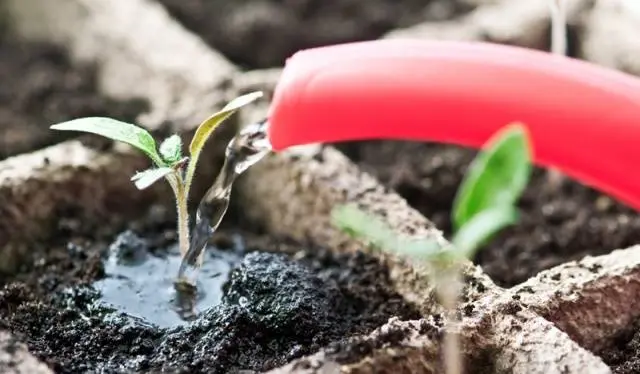
Reaction to a transplant to a permanent place
The end result of growing pepper seedlings is planting adult plants in a permanent place, whether it be a greenhouse or open ground. But even when all the difficulties with young seedlings have already been overcome, you may encounter yellowing of the leaves.
In most cases, this happens when a gardener plants overgrown seedlings in a permanent place. Its roots have already braided the entire landing capacity and they have nowhere to grow. And here, in the open ground or in a greenhouse, new lands open up in front of the roots of plants where you can grow. And they actively begin to spread, taking all the strength from the leaves. And the leaves of plants, deprived of the necessary nutrients, begin to fade and turn yellow.
In this case, fertilizing with mineral or organic fertilizers can help plants. But it is best to plant seedlings in a permanent place a little earlier, while their root system has not yet occupied the entire planting capacity.
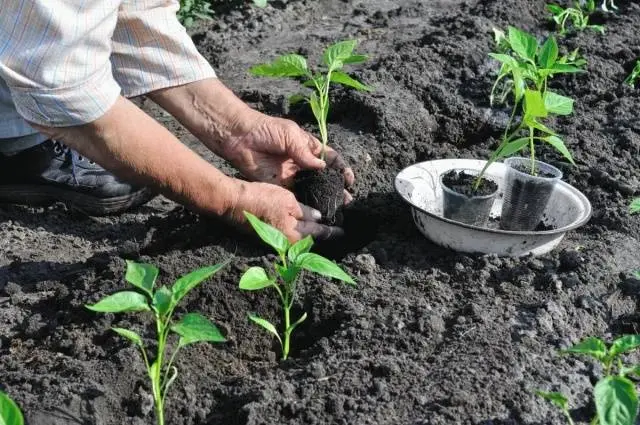
pest infestation
Pepper seedlings are the best treat for pests such as aphids and spider mites. At first, the presence of these uninvited guests is rather difficult to guess. As long as their colonies are very small, they are difficult to spot with the naked eye. But with the growth of their population on pepper seedlings, the following characteristic features can be noticed:
- the presence of cobwebs between adjacent leaves, as well as on the stem of the plant;
- yellowing of the sheet or part of it, as well as twisting of the sheet plate.
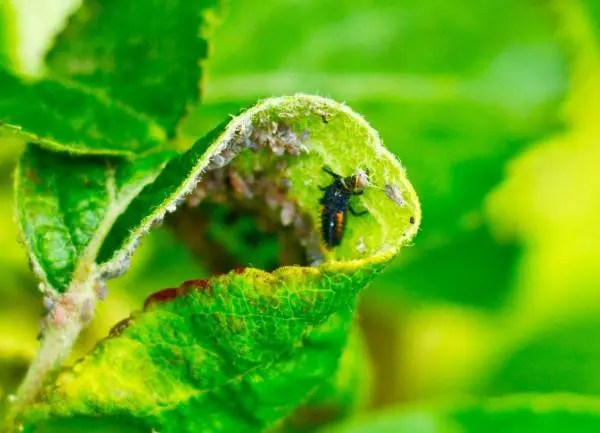
In the presence of these signs, it is impossible to delay the processing of seedlings. After all, these pests are quite voracious and can easily ruin young plants. In order to get rid of these insects, there are several time-tested natural recipes:
- Onion tincture. In order to prepare such a tincture, you need to take a liter of water and a glass of onion peel. They must be mixed together and left to infuse for a day. It is necessary to treat young seedlings with onion peel tincture every 5 days until the pests recede.
- Dandelion garlic tincture. For this tincture, you need to mix 1 glass of garlic, dandelion, and then pour them with 10 liters of water. This solution should be infused for 3 hours, after which they should spray all the seedlings.
But natural remedies are good only when aphids and spider mites have not yet bred strongly. If their colonies have reached impressive proportions, then it is worth asking for help from chemicals with insecticidal action. Many gardeners speak well of Aktar and Bi-58.
You also need to take care of personal protective equipment, such as gloves and a respirator.
The best way to prevent the occurrence of these pests is to inspect the seedlings. After all, when insects are not enough to get rid of them is much easier.
The considered causes of yellowing of the leaves of pepper seedlings in most cases appear as a result of improper care for these sensitive seedlings. In order to avoid the most common mistakes, we recommend that you familiarize yourself with the video about the features of its cultivation before planting this crop:









